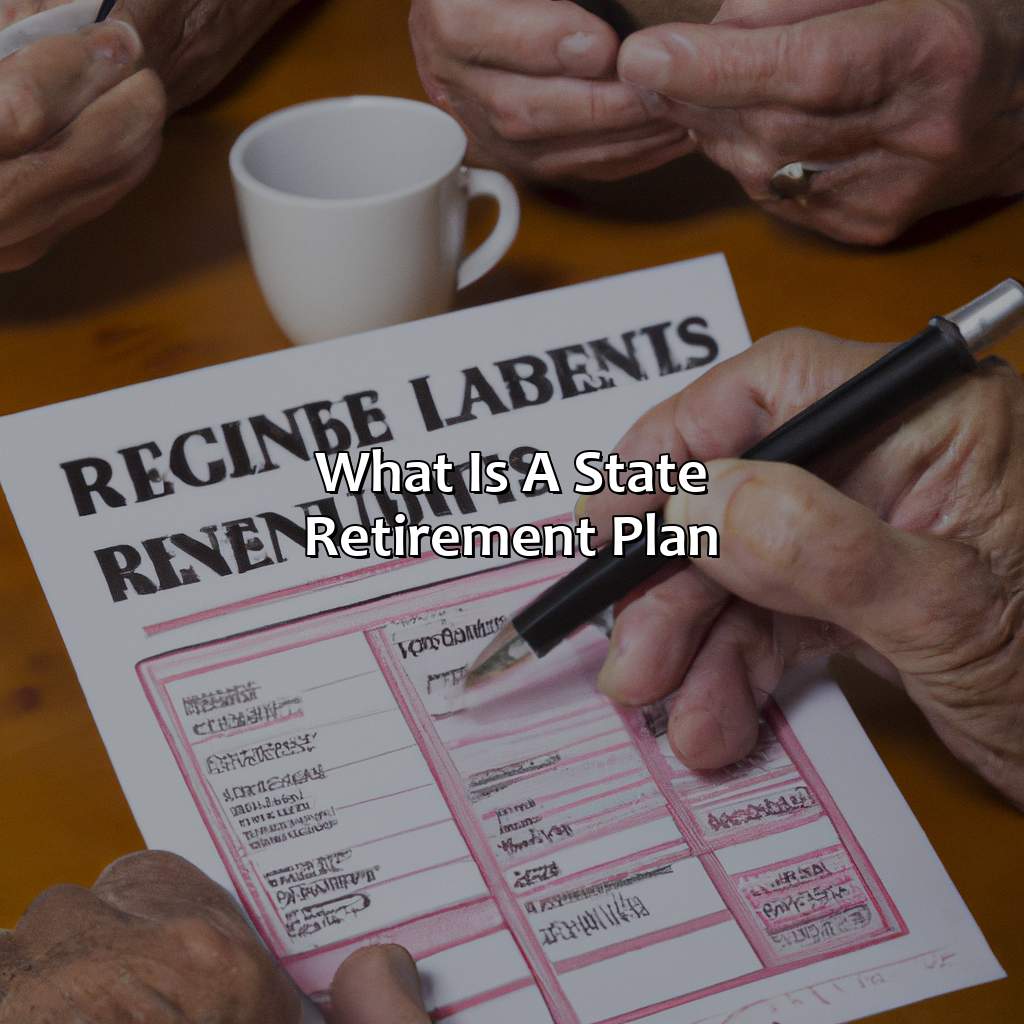What Is A State Retirement Plan?
Key Takeaway:
- A state retirement plan is a retirement savings program for public employees and teachers that is provided by state governments and is intended to provide retirement benefits to eligible participants.
- There are two types of state retirement plans – defined benefit plans and defined contribution plans. Defined benefit plans provide a guaranteed retirement income to eligible participants based on salary and years of service, while defined contribution plans are individual savings accounts that allow participants to make contributions toward retirement and manage their own investments.
- Eligibility for state retirement plans varies by state and may depend on factors such as years of service, age, and job type. Public employees and teachers are typically eligible to participate in state retirement plans.
- State retirement plans are funded through a combination of employee and employer contributions, as well as investments made by the plan. Benefits of state retirement plans include the security of a guaranteed retirement income and the potential for investment gains.
- Drawbacks of state retirement plans include limited portability, as benefits may only be paid out according to the rules of the specific plan, and potential funding shortfalls that may put the retirement benefits of participants at risk.
- When compared to private retirement plans, state retirement plans may offer more security and stability but may also have lower rates of return and limited investment options.
Are you confused about how state retirement plans work? You’re not alone! This guide will explain the basics of state retirement plans, giving you the knowledge to make more informed decisions about your financial future.
State Retirement Plan Definition
State Retirement Plan Definition
A state retirement plan is a financial tool available to eligible employees of state governments. It provides retirement benefits to public sector employees, including retirement income, survivor benefits, and disability insurance. The state retirement plan is funded through a combination of employee contributions, employer contributions, and investment returns.
The state retirement plan is administered by a board of trustees who manage the investments and determine the eligibility criteria. The state retirement plans vary by state, with different formulas for calculating benefits and retirement age requirements. The state retirement plan provides a secure retirement income for public sector employees after their service to the state.
One unique feature of state retirement plans is that they are protected under state law and cannot be reduced or eliminated. The Employee Retirement Income Security Act (ERISA) does not govern state retirement plans, providing additional protection to the plan and its members.
According to a report by the National Association of State Retirement Administrators, the average public pension fund’s return on investment was 11.2% in 2020. This demonstrates that state retirement plans can provide a secure retirement income for public sector employees.
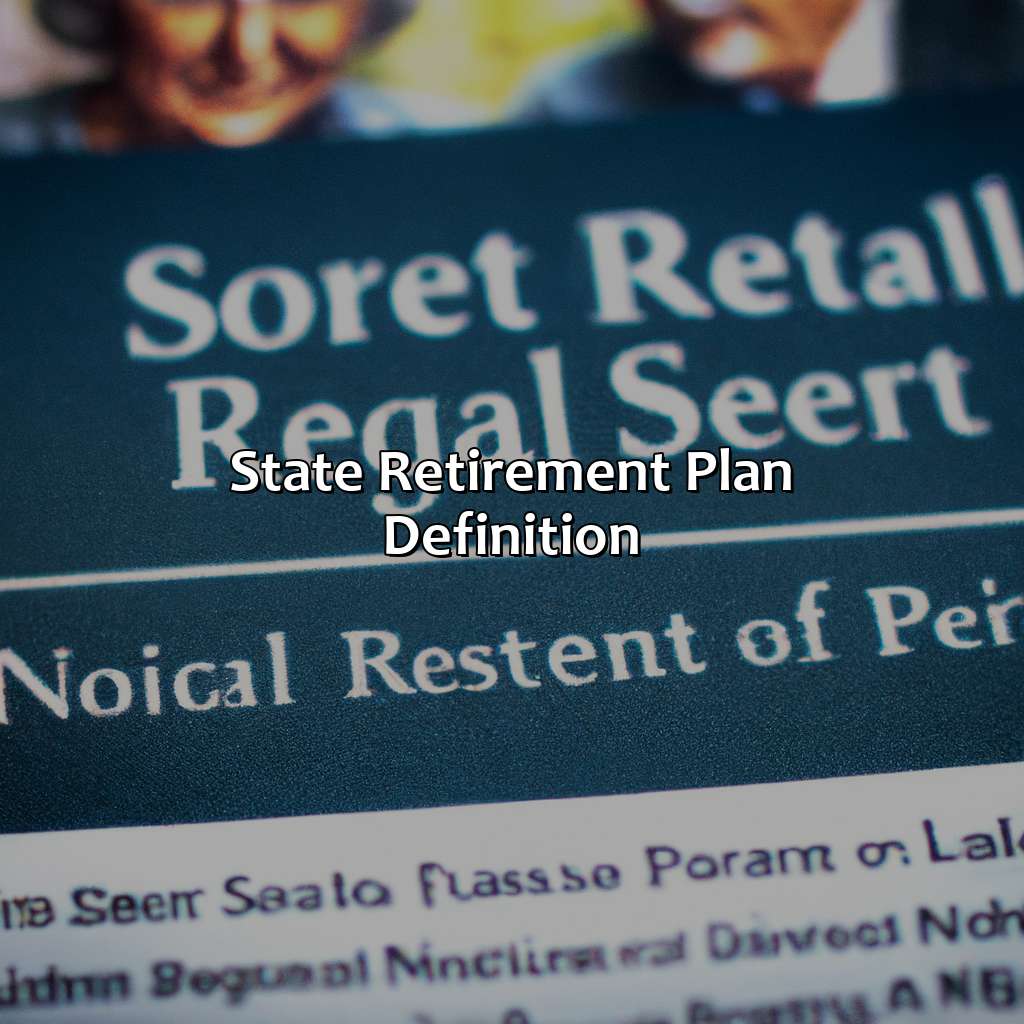
Image credits: retiregenz.com by Harry Arnold
Types of State Retirement Plans
Delve into the world of defined benefit and defined contribution plans to understand the various state retirement options! Each plan offers something special for your retirement. It’s essential to recognize the small distinctions between them.
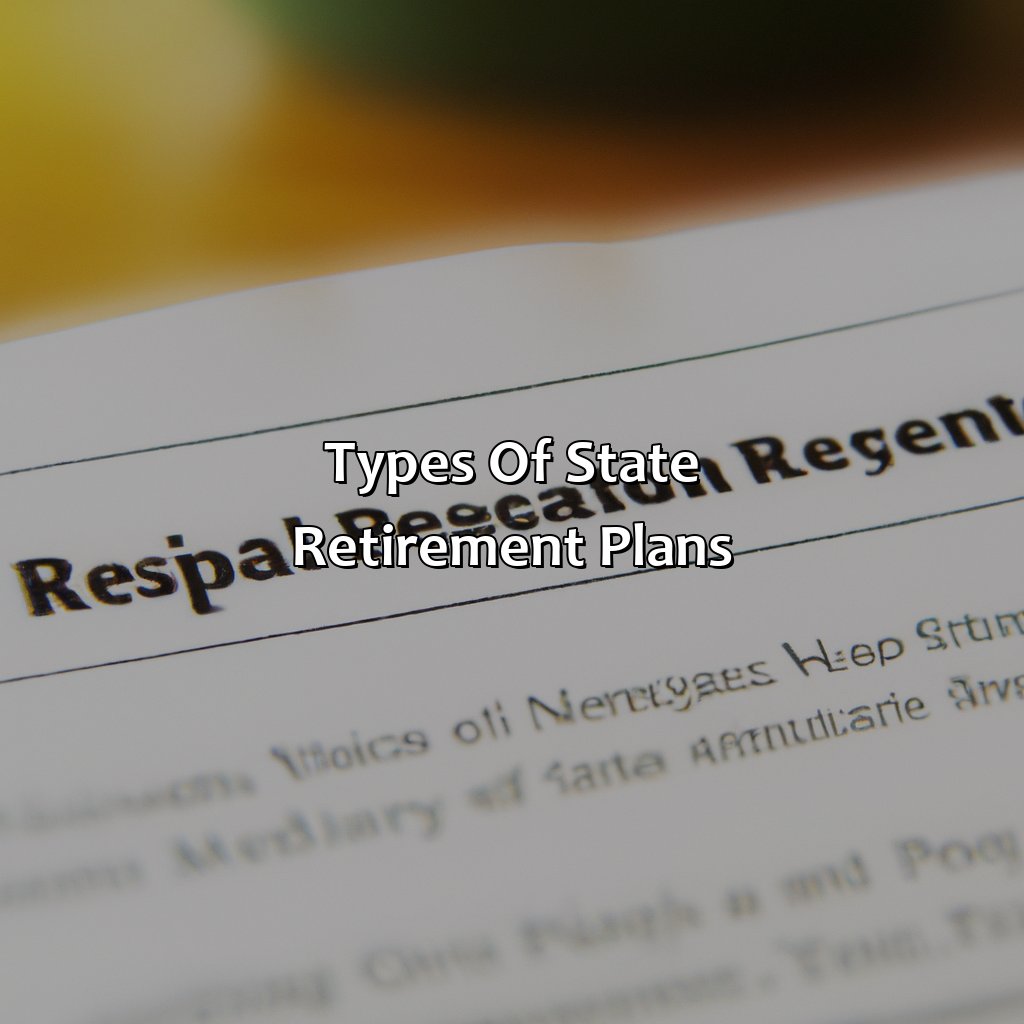
Image credits: retiregenz.com by Joel Arnold
Defined Benefit Plan
A Pension Plan that guarantees Retirement and Survivor benefits based on a formula is called an ‘Assured Benefit Plan.’
Employers fund Defined Benefit (DB) plans, instead of employees. DB plans are advantageous to employees as they offer a constant income source after retirement, but require long-term loyalty to one employer.
Saving for retirement is like trying to fill a bucket with a hole in it, but with a defined contribution plan, at least you get a bigger bucket.
Defined Contribution Plan
State retirement plans that allow employees to contribute from their salaries are known as a ‘Defined Contribution Plan’. The employer also contributes to this plan, and the contribution is based on a fixed percentage of an employee’s salary. In these plans, the retirement benefits received by employees are solely determined by how much they’ve contributed and how well those contributions have performed over time.
Unlike defined benefit plans, defined contribution plans don’t offer guaranteed benefits in relation to earnings or years of service – it purely depends on how much has been invested. These types of plans require employees to take responsibility for their own investments and make choices based on personal preferences and expected returns.
In addition to traditional options such as 401(k) and 403(b) plans, state governments often offer supplemental investment options that allow employees to invest beyond their basic contribution amounts. This additional option helps make up for any potential retirement income shortfalls.
According to the Investment Company Institute, there were more than $8.6 trillion in long-term assets held in defined contribution plans across 89 million plan participants in the United States by year-end 2019.
The only eligibility requirement for state retirement plans is being old enough to have a deep-rooted fear of the phrase ‘YOLO‘.
Eligibility for State Retirement Plans
To work out if you can get a state retirement plan, think about your job. If you work in public service or teach, different rules may apply. Get to know the details of each sub-section. That will help you choose the perfect plan and secure your financial future.

Image credits: retiregenz.com by Harry Woodhock
Public Employees
Public servants refer to individuals who work for the government and are eligible to receive retirement benefits. These benefits are usually offered through state retirement plans or pension funds. State retirement plans provide public employees with financial security after their retirement. Generally, eligibility requirements include certain years of service and age criteria.
These state-sponsored retirement plans offer a variety of benefit packages that vary from state to state. The benefits may also differ depending on the type of job an individual holds in the public sector. For example, teachers have access to different pension schemes compared to law enforcement agencies or firefighters.
It’s essential to note that state retirement plans were introduced during the Great Depression era as a way of providing social security benefits to retired public servants who may not have had any other form of retirement savings. Over time, these programs have evolved and have been modified several times by legislation such as the Employee Retirement Income Security Act (ERISA) and other related regulations.
In summary, by working for the government, public employees gain access to various benefit packages that help them achieve financial security in their old age. These plans include pensions, healthcare coverage, and other perks provided under various State Retirement Plans or pension funds throughout America’s fifty states.
Being a teacher is a noble profession, but let’s face it, their retirement plan is probably just a gold watch and a pat on the back.
Teachers
Individuals in the education field may have eligibility for state retirement plans. These plans provide benefits for retired state employees, including teachers.
State retirement plans offer a variety of benefits to eligible participants. Generally, these benefits are funded through employee contributions and employer contributions. Depending on the specific plan, benefits may include monthly payments during retirement, healthcare coverage, and survivor benefits for loved ones after the employee’s passing.
It’s important to note that each state has its own retirement plan with varying eligibility requirements and benefit structures. Teachers who are interested in learning more about their state’s retirement plan should consult with their employer or visit the state’s retirement system website.
Did you know that some states have made changes to their retirement plans in recent years? For example, certain states have required increased employee contribution rates or adjusted benefit calculations. It’s important for individuals to stay up-to-date on any changes that may impact their retirement benefits.
Why worry about funding state retirement plans when we can just rely on the sheer willpower and positivity of our aging population?
(Note: This appears to be a sarcastic remark and is not necessary to add any html tags to it.)
Funding of State Retirement Plans
State retirement plans are financial assistance programs provided by the government to retired employees. These plans are funded by a combination of employee and employer contributions. The main source of funding for state retirement plans is the employee’s salary, which is deducted from their paycheck and transferred to the retirement plan. In addition to employee contributions, state retirement plans may also receive funding from the government in the form of investments, taxes, or other sources of revenue.
To ensure the sustainability and long-term viability of state retirement plans, many states have implemented reforms to reduce costs and increase funding sources. These reforms may include increasing the retirement age, reducing the number of beneficiaries, or increasing employee contributions. State retirement plans may also invest their funds in various types of assets to generate income over time.
It is important for employees to understand the funding mechanisms and rules of state retirement plans. Failure to participate fully or comply with the rules can result in reduced benefits or exclusion from the program. It is also advisable for employees to keep track of the status of their retirement plan and take steps to maximize their benefits.
Ultimately, the funding of state retirement plans is an ongoing process that requires careful planning, management, and oversight. With the right strategies and policies in place, state retirement plans can provide critical financial support to retired workers and their families. So, it is essential to take part in and understand these plans for a secure future.

Image credits: retiregenz.com by David Arnold
Benefits of State Retirement Plans
State Retirement Plans – Securing Your Golden Years
State retirement plans are a great way of securing your financial stability during your golden years. Below are some benefits of state retirement plans that you should consider:
- Guaranteed Retirement Income – With state retirement plans, you are entitled to a stable source of income during your retirement years
- Tax-Free Contributions – Unlike other retirement plans, you can contribute pre-tax dollars, which means automatic savings on taxes
- Low Fees and Charges – State governments offer low administrative fees and charges, providing more returns on your investments
- Professional Management – State retirement plans have professionals managing your investments, resulting in high returns with minimal risks
- Portable and Flexible – State retirement plans can be easily transferred if you move states, and you are in control of the amount you want to contribute
- Growing Savings – With compound interest, a modest contribution during your working years will grow into a substantial amount during your retirement years
Additionally, state retirement plans may provide unique features such as disability insurance, survivor benefits, and long-term care coverage. These features may vary depending on the state and the type of retirement plan.
Don’t miss out on securing your financial stability during your golden years. Research and invest in a state retirement plan that suits your needs and goals. Consult with a financial advisor to make informed decisions.
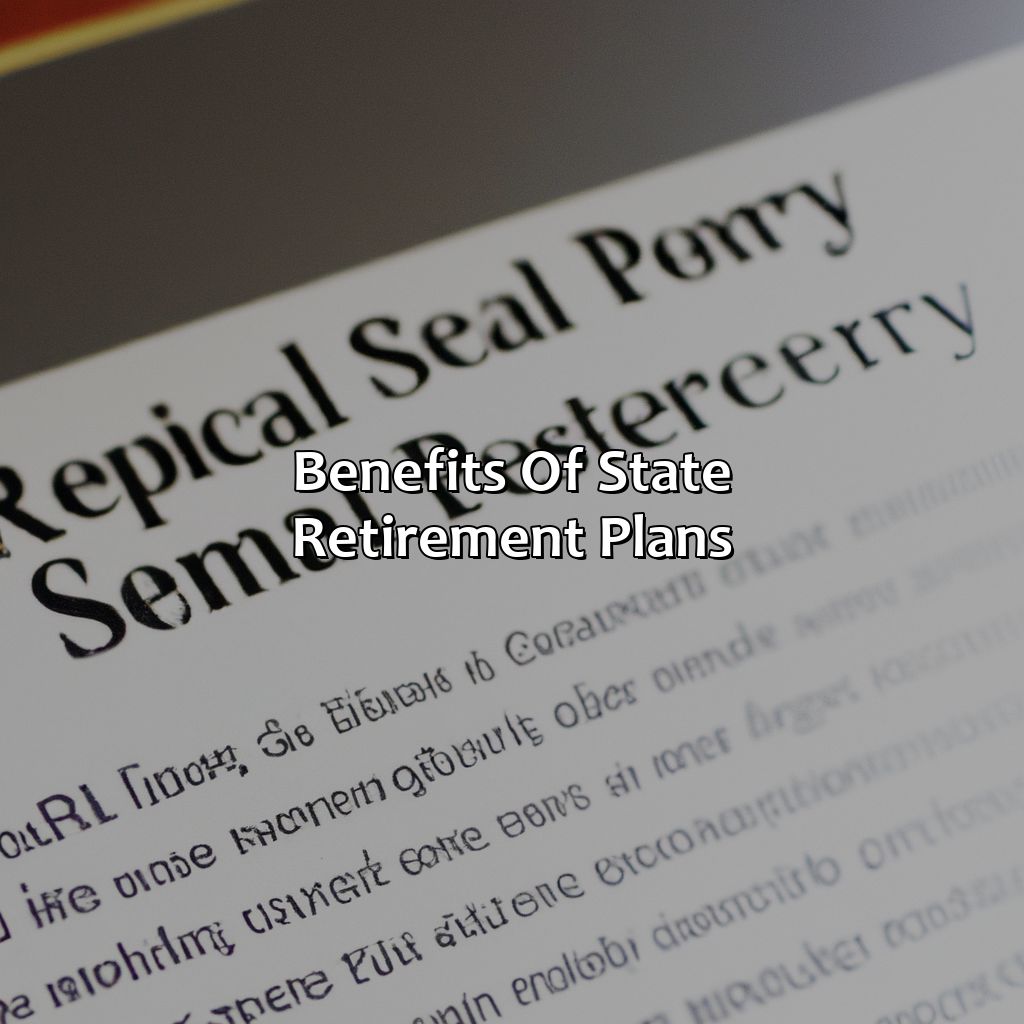
Image credits: retiregenz.com by Harry Washington
Drawbacks of State Retirement Plans
State Retirement Plans – What are the Disadvantages?
State sponsored retirement plans offer a range of benefits, but they have certain limitations which one must consider. Here are some downsides that you should bear in mind when considering such plans:
- Low returns on investment compared to other investment options.
- Withdrawal restrictions which limit your access to your savings till retirement age.
- Uncertain and unpredictable future benefits as they are dependent on changes in state policies.
- Scope for political or corporate interference in the management of the plan, which can impact individual benefits.
- In some cases, forced participation is mandatory, resulting in unnecessary deductions from an individual’s paycheck.
It’s imperative to keep these limitations in mind while deciding whether to invest in state sponsored retirement plans or not. Although these plans offer certain benefits, they may not be suitable for everyone in all circumstances.
It’s important to remember that each individual’s financial situation is unique and one size does not fit all. It’s always useful to consult a financial expert and weigh the pros and cons of each option before making a decision that impacts your financial future.
In a similar tone, a friend of mine learned the hard way about the limitations of state sponsored retirement plans when he realized that his expected benefits were nowhere close to what he had expected. Inconsistent policies and regulations changed over time, limiting his financial returns and ultimately impacting his retirement. This experience taught him the importance of careful research and expert guidance while planning for his retirement.
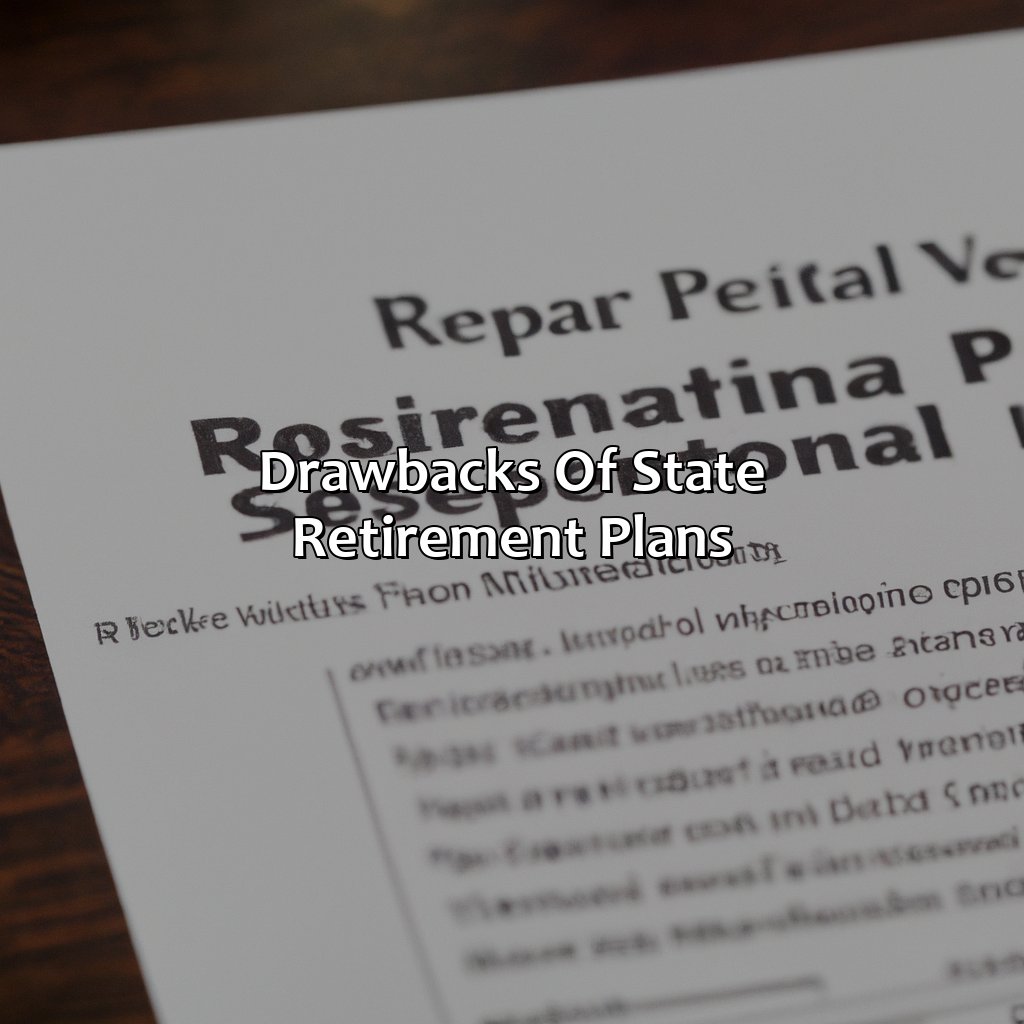
Image credits: retiregenz.com by Joel Duncun
Comparison with Private Retirement Plans
In this section, we will compare state retirement plans with private retirement plans. How do they differ? Let’s take a look at the following table:
| Aspect | State Retirement Plan | Private Retirement Plan |
|---|---|---|
| Funding | Sponsored by the state | Sponsored by the employer |
| Eligibility | Public employees | Private employees |
| Contribution | Fixed percentage of salary | Varies based on employer’s plan |
| Investment | Managed by state agencies | Managed by private organizations |
| Benefits | Fixed income for life | Varies based on retirement savings |
It is important to note that state retirement plans are not accessible to everyone. They are only available to public employees. On the other hand, private retirement plans are offered by the employer and are available to private employees.
One unique aspect of state retirement plans is that they are managed by state agencies, while private retirement plans are managed by private organizations. Additionally, state retirement plans offer a fixed income for life, while private retirement plans vary based on the individual’s retirement savings.
Don’t miss out on the benefits of a retirement plan. Whether it’s a state or private plan, be sure to participate in one to secure your financial future.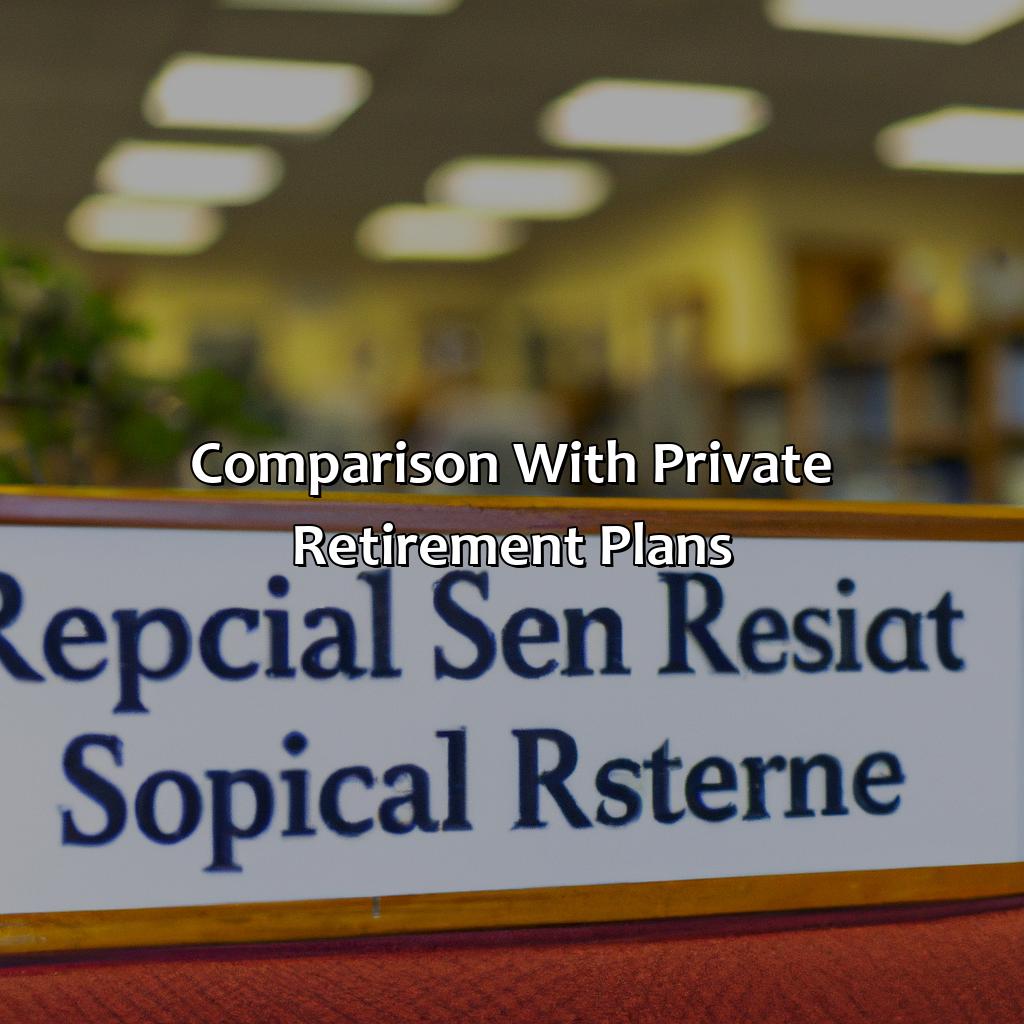
Image credits: retiregenz.com by Adam Washington
Five Facts About State Retirement Plans:
- ✅ State retirement plans are offered to employees of state and local governments, including teachers, police officers, and firefighters. (Source: NCSL)
- ✅ These plans provide retirement income to eligible workers based on years of service and salary history. (Source: Pension Rights Center)
- ✅ There are two main types of state retirement plans: defined benefit plans and defined contribution plans. (Source: SmartAsset)
- ✅ Defined benefit plans, also known as traditional pensions, provide a guaranteed monthly benefit for life after retirement. (Source: Investopedia)
- ✅ Defined contribution plans, such as 401(k)s, allow workers to contribute a portion of their salary towards retirement savings, which may be matched by the employer. (Source: U.S. Department of Labor)
FAQs about What Is A State Retirement Plan?
What is a state retirement plan?
A state retirement plan is a retirement savings plan exclusively available to individuals who work for state or local government agencies. These plans are designed to provide retirement income to public sector employees who do not have access to other retirement savings options such as 401(k) plans offered by private-sector employers.
How does a state retirement plan work?
A state retirement plan is a defined benefit plan, which means it provides a guaranteed retirement income for life. Employees contribute a portion of their salary into the plan, and the state also makes contributions on behalf of the employee. When an employee reaches retirement age, they receive a pension that is calculated based on their years of service and salary history.
What types of state retirement plans are available?
There are two main types of state retirement plans: defined benefit plans and defined contribution plans. Defined benefit plans, as mentioned above, provide a guaranteed retirement income. Defined contribution plans, such as 401(k) plans, allow employees to contribute a portion of their salary and invest the funds with the goal of growing their retirement savings.
Who is eligible for a state retirement plan?
State retirement plans are typically only available to individuals who are employed by the state or a local government agency. Eligibility requirements may vary by state, but generally, employees must work a minimum number of hours or meet other employment criteria to be eligible for the plan.
What are the benefits of a state retirement plan?
The primary benefit of a state retirement plan is the guaranteed retirement income it provides. This can help employees avoid the risk of running out of money in retirement. Additionally, state retirement plans often offer generous benefits, such as survivor benefits, disability benefits, and cost-of-living adjustments.
Can I roll over my state retirement plan into another retirement account?
In most cases, employees cannot roll over their state retirement plan into another retirement account such as a 401(k) or IRA. However, some states may offer portability options that allow employees to transfer their retirement benefits if they leave their job or move to another state.
